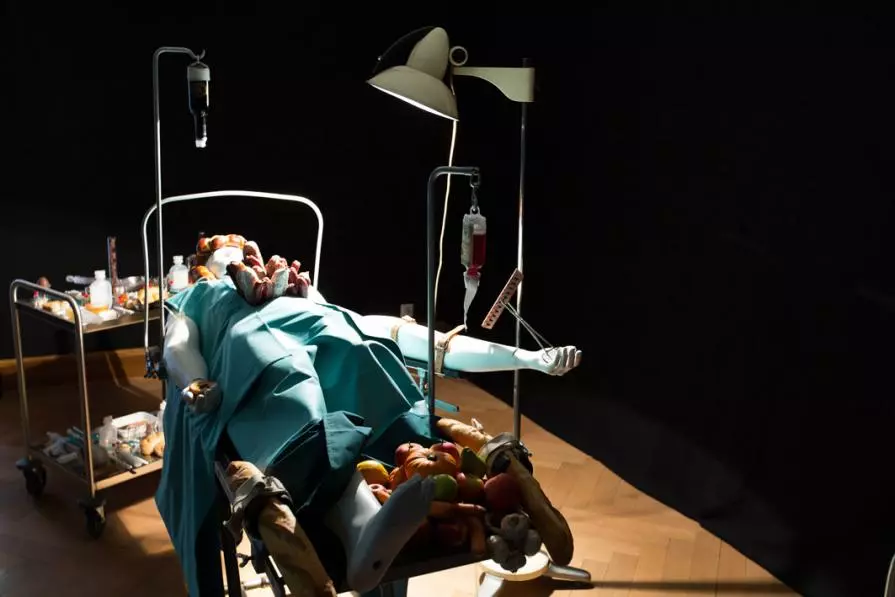
eat body design
As the sausages in the stomach represent the foreign body in one’s own body, and the transfer from the one to the other, so stands the crown of bread and baked goods, which the test-tube man carries more so in than on his head, for the metaphysical and religious significance of food. We eat not what we savor, but rather what we understand is consistent with our ideas about what makes sense for us. The incredible variety of different forms of edibles (such as the assortment of bread available in bakeries) as well as the different recipes are not rational to explain. We could also feed ourselves much easier, and would not – biologically –live worse, if we ate only a few very simply decorated dishes. Considering, for instance, the labor, and thus economic effort, necessary to create a pretzel, without managing to create specialized taste or other pleasures of beneficial peculiarities, then the value of the pretzel must lay outside nutrition, pleasure, and taste. Eating a pretzel is spiritually satisfying, because it – be it for social, ritual, traditional, religious, or other meaningful aspects – makes “sense”. If we satisfy our hunger, we fulfill not only a basic biological need, but also – provided there is a choice and supply – a spiritual need: “good” food fuels the soul in addition to the stomach.
The operating table itself is a symbol of regeneration. There we are (in the best case) reproduced. The body has been completely regenerated. We rely entirely on the procedures – with no alternative – as also with food. And the surgery table is the epitome of purity, an order that the food must uphold. Our food must be pure in every respect – in terms of morals, religious commandments, laws, expiration dates, and of course as a capitalist commodity. We equate unclean food with disgust and poison – with evil intentions – with being different – with strangers – with death.
The side table with organs, which are both the ingredients and the “spare parts” of the test-tube man, play with the ambiguous corporeality of food as the intersection between pleasure, intimacy, and fear. We allow no other thing to penetrate our innermost selves. With the design and naming of edibles and dishes, we process the dichotomy of eating as an object, which is at once part of the world around us and also part of the world within us. We have someone to “gladly feed on;” we give away our most important organ, the heart, made for this purpose out of marzipan or gingerbread, although it may look quite different from the real organ. The brain made out of marzipan represents the fact that taste does not come from the tongue or palate, but instead from the brain.
The worktable, on which the boundaries between the eating and surgical tool, between ingredient and medicinal drug are blurred (will the patient be operated on or fed?), broaches the issue at conflict between health, hygiene, healing arts, diet mania, and fear of poison, in which food has been involved since time immemorial.
On the push cart next to the head a different type of eating situation has been constructed: how we take our food to ourselves is not biologically determined, but learned purely culturally. The rules, how the eating process should take place, with a fork and knife, without touching food with fingers, move themselves into a very narrow framework. Even the slightest deviations disturb us. In most cases we follow the rules of nutritional intake as strictly as the rules of the road. Here food is removed deliberately from the everyday context of “normal” food, in order to show that we could also eat quite differently. Table manners and eating rituals are a question of habit, convention, and tradition, and are legitimized – as they have no rational justification – by means of morality.
 Share / Save
Share / Save








Commenti 0
Inserisci commento